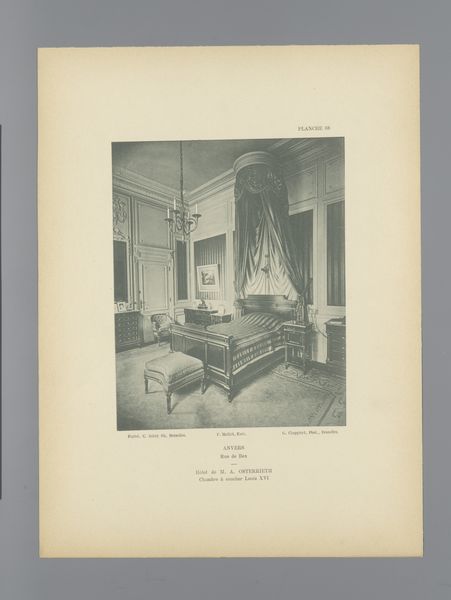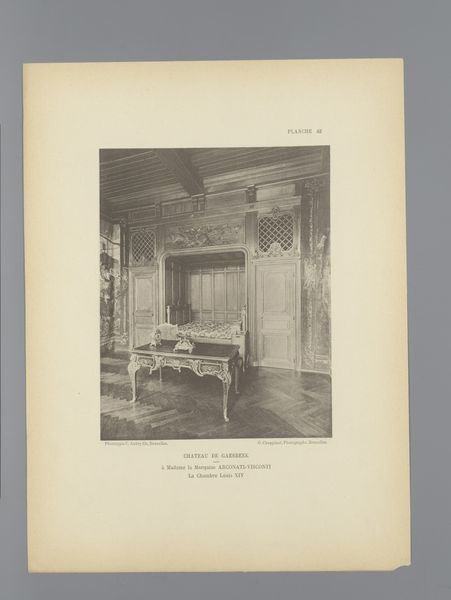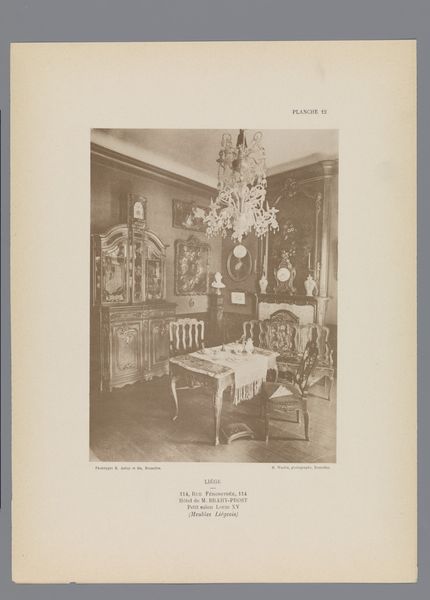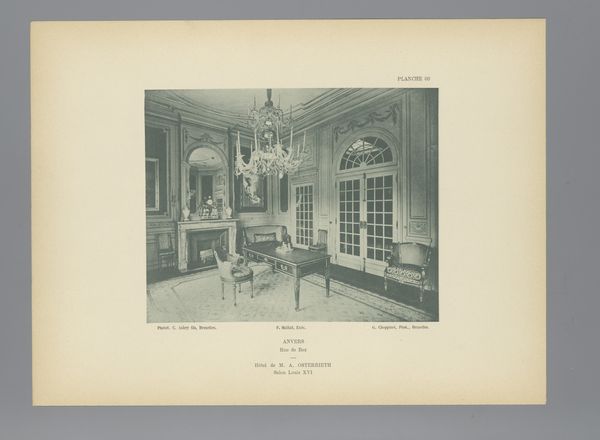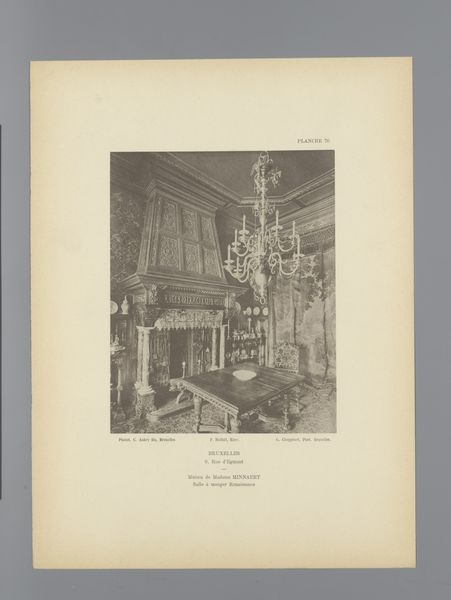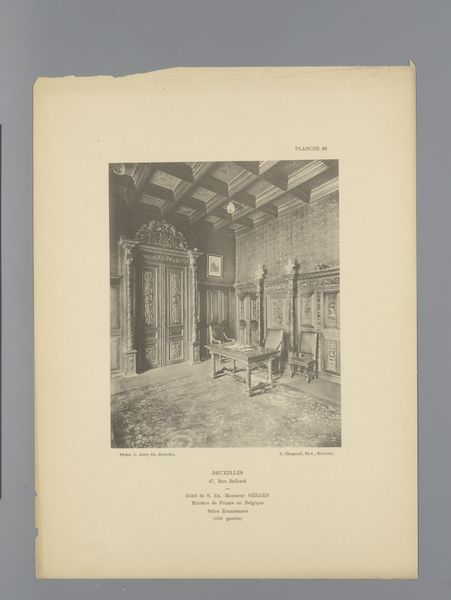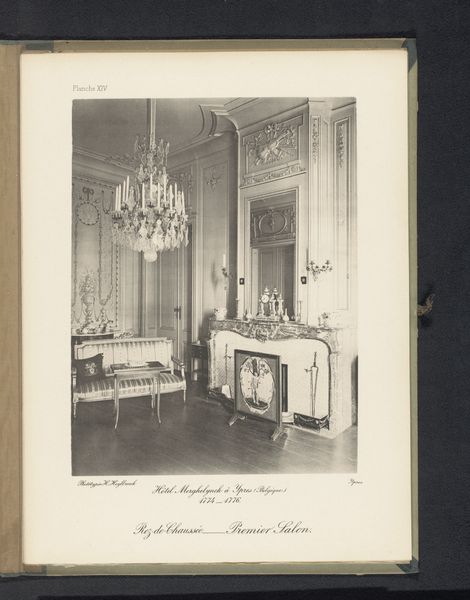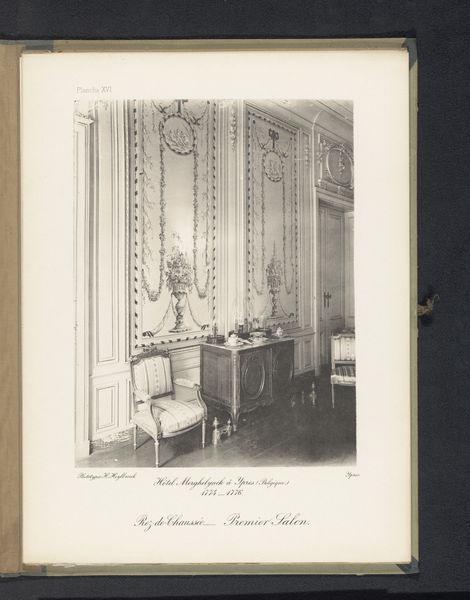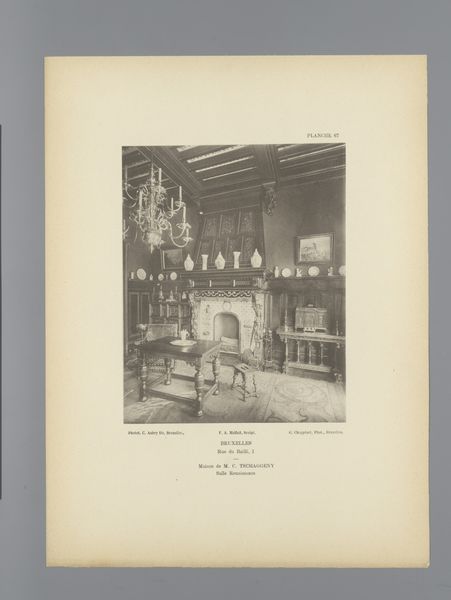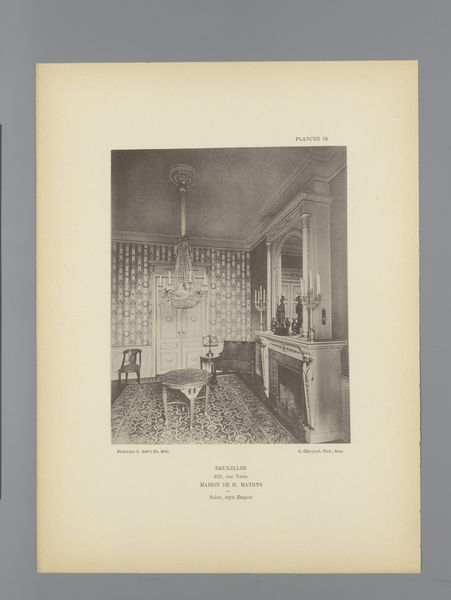
Dimensions: height 220 mm, width 161 mm
Copyright: Rijks Museum: Open Domain
Curator: Let's delve into "Gezicht op een zitkamer in het hotel van Brahy-Prost in Luik, België," a photograph, or perhaps a print after a photograph, dating to before 1898. The scene presents a sitting room interior. Editor: The space is strikingly ornamented; there are patterns and decorations layered on top of more patterns, it's an interior steeped in obvious luxury but something about its uniformity feels austere rather than inviting, despite all the attempts to soften it. Curator: The opulence on display underscores a significant aspect of 19th-century societal aspirations. Interiors like this, showcased publicly, reinforce the status and power of the hotel owner. They reflect a deliberate effort to communicate affluence and cultivated taste. Editor: Definitely. And taste, or rather the construction of it, is so central here. Looking at the arrangement of the furniture, though, you almost get the feeling this room wasn't really made for practical use; the scene feels deliberately composed and displayed. A presentation of status in this bourgeois environment rather than lived in. Curator: Precisely. And how these settings influenced social mobility. The careful neoclassical architecture would signal historical knowledge and social standing to anyone entering this space, aligning themselves with aristocratic ideals in an age defined by capitalism. Editor: The rigid arrangement almost suggests an aspirational attempt to claim power. How might this hotel interior represent or reinforce certain hierarchies both of class and, perhaps, gendered spheres within the space itself? There's this sense of curated experience more than lived comfort that dominates my reading. Curator: Those are important observations, absolutely. One could delve into how such displays contribute to the construction of social and economic narratives of the time. It also reveals a great deal about the public role that such places played, as settings but also as ideological instruments. Editor: And maybe interrogating that role can give us clues as to why images of these spaces mattered, then and now. Curator: Indeed. By studying depictions such as this, we get a clearer idea about not only the socio-political framework that birthed this style of art, but also a more precise grasp on the visual and symbolic systems at play within a specific historical moment. Editor: Thank you. I think it's a valuable reminder about the complexities embedded in depictions of luxury.
Comments
No comments
Be the first to comment and join the conversation on the ultimate creative platform.
